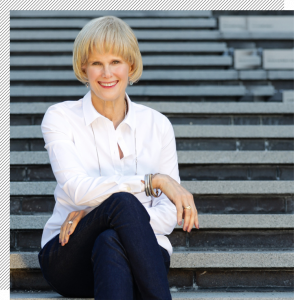Who doesn’t love a good story? Indeed, years later we will remember stories we’ve heard.
Stories have so much power that many brands are using them to catch people’s attention — and it’s working. Called brand storytelling, it’s a powerful tactic that’s gaining speed in marketing circles.
Now, you might be thinking, “But, Wendy, I’m not an author”
And the truth is, you don’t have to be. Storytelling of course isn’t exclusive to authors. It’s something we all do. You just need to know how to do it for a brand. And that’s what we’re going to talk about.
In this post, we will discuss why brand storytelling matters, how it will boost your strategy, and specific storytelling tips that will help you master telling your brand story.
Why Brand Storytelling is Crucial for Your Business
When it comes to your brand, storytelling is more than just entertainment. It helps your audience to connect with you as a person and with your brand.
How?
For starters, brand storytelling…
- Makes you memorable – We struggle to remember data and statistics. You tell me that your brand made X dollars and grew by Y% in 2021, that’s nice — but who will remember it? On the other hand, if you share how you overcame inequality and sexism and rose to become one of Forbes’ Top 100 Inspiring Women Entrepreneurs, you’ll be remembered.
- Makes you human – Brand storytelling takes businesses and humanizes them. For example, very few of us remember details of what Oprah Winfrey covered on her talk show or an issue of her magazine. But millions of us can recall and relate to her rags to riches story of struggle. It makes her more real to us, even if she makes more money than we could ever hope to in our lifetime. That’s a powerful part of storytelling.
- Builds a tribe – What’s a tribe? It’s a group of people with similar interests and goals, all connected through one item, such as a brand. Storytelling helps people to identify with you and want to become a part of your tribe. We see, for example, how the story of Steve Jobs’ struggles and innovations has been woven into Apple’s brand story and continues to fuel a connection among its community.
So now that we understand how storytelling bolsters your brand, let’s examine how you can with storytelling tips that will put you ahead of your competition.
5 Storytelling Tips That Will Help You to Create a Compelling Story
1. Get to Know Your Audience
Who will hear your story? Do they have specific emotions, beliefs and values that you relate to? What is their life experience? Have they struggled in similar ways as you?
Answering these questions is an essential part of knowing your audience for the purpose of storytelling.
It helps you to understand what’s going to resonate most with your audience and create a real and lasting connection.
How do you get this information? The most simple way is to talk with clients and prospects. Ask them questions. You can also connect with people on social media and look at their posts to learn more about what interests them.
In these small ways, you can gather details that will help focus your storytelling efforts.
2. Decide on a Story
There are many directions your story can take. But decide on one that has the most oomph. This could be a story about…
- Yourself – Focus on you. Create a story that features your backstory, what has made you who you are today — your struggles, failures, and wins. All of this— the good, the bad, and the ugly — creates a level of authenticity audiences will relate to.
- Your values – Tell stories that reflect your deepest values. For instance, instead of telling people you’re a honest, hardworking person, tell a story that demonstrates that without ever actually using the words.
- Your community – Create a sense of community and belonging, showing people that you belong to the same community and that you’re not that different from them. At the end of this kind of story, people will be saying, “Me too!”
- Something inspirational – Tell a story that encourages other people to do something similar. Share how an action in your life led to a certain outcome and how they can do the same.
As you can see, there are many forms your story can take. What’ most important is that it’s genuine and it captures the attention of your audience.
Think about your life and career and note the stories that emerge. Write them down. As you move forward, choose the one that is the most compelling and poignant to be your brand story.
3. Choose Your Medium
Now that you have your story, here are a few ways to tell it.
From your research into your audience, you no doubt have an idea of what content they consume. Do they read blog posts? Do they listen to podcasts? Knowing how your audience likes to consume their media will help you land on the most effective options.
And you don’t have to choose just one — you can use a combination of mediums to get out your story, depending on what your audience enjoys. Here are some ways to do so…
- Write it – Through text, and maybe even images, write your story to use in blog posts, articles, and books. All you need to get starteds a free word processing app or software, such as Google Docs.
- Tell it – This puts you on center stage as the speaker. This could be in a presentation, during a speech, or as part of a panel. Start with industry talks and you can progress to TEDtalks. Prepare— perhaps writing out a script —and practice it before your event.
- Record it – Record it sot it can be easily replayed — perhaps on a podcast or other recorded medium.
- Digitalize it – This can be a video, animation or game. The added visual nature of this storytelling medium makes it particularly powerful. If you have the opportunity and the budget, this is definitely one I would recommend, as it tends to resonate with audiences.
4. Create It
You’ve done all the thinking and planning — now it’s time for the hard part: Putting it in a usable form. Whether that’s writing it down, creating a script, or investing in digital tools, you need to get started creating it.
You most likely have the broad strokes of what you want to share. Now it’s time to fill in the details and add in your own personal flair.
And it’s during this step that you might want to ask someone to look over and edit it — perhaps someone on your team, a trusted career coach, or a close friend. Every bit of feedback will help you to improve it before you next step: sharing it.
5. Share It
Now that you have your final story, it’s time to share it, promote it, scream it from the rooftops — okay, maybe not a scream, but you get the picture.
Look for ways to share it. Depending on the medium of your story, you might share it on…
- Your blog or website
- Social media
- Guest posts on industry blogs
- Trade publications
- Ebooks
- Videos
- Podcasts, as a guest
Concluding Thoughts on Storytelling for Your Brand
Storytelling is a powerful skill — some might even say a tool — for branding. And as you begin to think more about your brand story, you will no doubt see other opportunities for storytelling.
Remember, storytelling isn’t a one-and-done thing. It takes time to develop your story and share it. As time goes on, you may need to adjust or create a new story to fit your brand’s needs.
I hope this article and the storytelling tips in it help you to give voice to your own brand’s story and enjoy all the benefits that brings. I look forward to reading and hearing your brand stories and seeing how they drive your business. Feel free to share your stories with me by dropping me a line or leaving me a comment in the section below. I will be looking out for them.
You Might Also Enjoy Reading…
- Thought Leadership Marketing Primer: How to Ace Thought Leadership
- Positioning Strategy 101: How to Develop Your Own Master Plan
- Personal Branding for Coaches and Consultants: 8 Tips for Success
- Over 50: The Biggest LinkedIn Profile Mistakes to Avoid
Photo by Dmitry Ratushny on Unsplash






One Response
Such a wonderful article with so many great tips. I agree. Storytelling helps people to identify with you and your brand and goes such a long way to making you more memorable.
When we’re able to connect with people through story…even if they’re not reading to make a purchasing decision right now, you’ll be the first person that they think of when they’re ready.
Love, love, love this post!